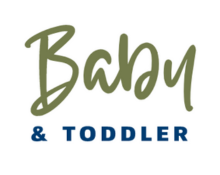
Extended breastfeeding refers to breastfeeding beyond the age of one year, typically continuing for several years or until the child self-weans. It is a personal choice made by the mother and the child. Here are some key points about extended breastfeeding:
Nutritional benefits: Breast milk continues to provide valuable nutrition to the growing child even after the first year. It contains a balance of nutrients, antibodies, and enzymes that support the child’s immune system, brain development, and overall health.
Emotional bonding: Extended breastfeeding can strengthen the emotional bond between mother and child. It provides comfort, security, and a source of nurturing for the child, promoting a close and trusting relationship.
Continued immune protection: Breast milk continues to offer immune protection against various illnesses and infections, reducing the risk of respiratory infections, gastrointestinal illnesses, and allergies.
Nutritional flexibility: As the child grows and begins to explore solid foods, breast milk can complement their diet by providing additional nutrition and hydration. It can act as a “safety net” during times of illness, picky eating, or when the child is not consuming a varied diet.
Psychological benefits: Extended breastfeeding can contribute to the child’s sense of security, confidence, and self-soothing abilities. It provides a familiar and comforting routine, particularly during times of stress or change.
Natural weaning process: Extended breastfeeding allows the child to naturally wean at their own pace. Children who are allowed to self-wean often do so gradually and with minimal resistance, as they gradually lose interest in breastfeeding.
Cultural and societal factors: Acceptance and attitudes towards extended breastfeeding vary across cultures and societies. It is important to consider and respect the cultural norms and expectations of your community while making decisions about breastfeeding duration.
It’s worth noting that extended breastfeeding may not be feasible or desirable for every mother and child. Every breastfeeding journey is unique, and it’s essential to consider the needs and comfort levels of both the mother and the child. Ultimately, the decision to continue breastfeeding beyond the first year rests with the mother and should be made based on what feels right for her and her child. Consulting with a healthcare provider or lactation consultant can provide personalized support and guidance on extended breastfeeding.
